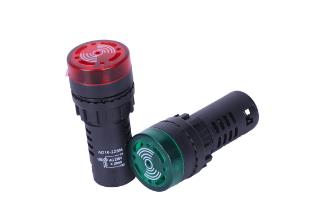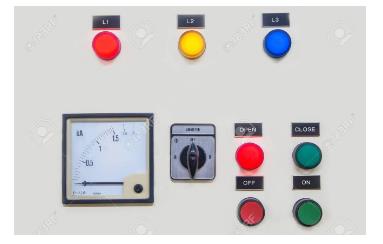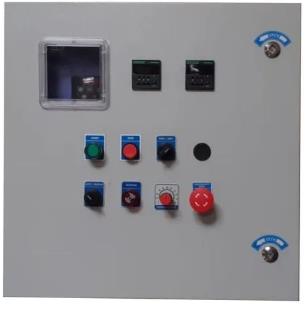Introduction
Indicator lights are some of the most commonly used output devices in circuits. They provide visual output for the users to indicate if there’s anything that needs attention. This article is about buzzer light indicators that are indicators that have built-in buzzers.
What is a Buzzer Light Indicator
Buzzer light indicators are also called ‘indication light buzzers’. These devices are a combination of indicator lights and high pitched buzzers. Indicators are used in many applications to grab the attention of the operators or nearby personnel to indicate if something significant is happening.

There are two types of light indicators, light only type and the light+buzzer type. The ones that have a built-in buzzer emit a high-pitched tone or a tone pattern when powered.
Let’s discuss some of the applications of indicators.
- Power distribution boards
Indicators are used In three-phase power distribution boards to indicate the status of the three electrical phases. These are the light-only type and do not emit a sound. The typical colors for the three phases are red, yellow and blue.

- Electrical Control Panels
Industrial automation systems and machinery often have control panels. These control panels have displays, input buttons, switches and indicators. In more simple control panels where displays are not necessary but an output is needed, buzzer indicators are used. For example, some hydraulic press control panels have buzzer indicators to countdown the press sequence to alert everyone to stay clear from the danger zone.
- Emergency alarm systems
Another application of indicators with buzzers is emergency alarm systems. These are commonly used in building management systems (BMS) and fire suppression systems to alert the occupants of a premise about a potential fire hazard. Larger indicator buzzers emit a very high pitched tone pattern that catches anyone’s attention immediately.
- Food processing systems
Indicators are also used in food processing systems where the temperature alerts and timers are used.
Let’s see what a buzzer light is made of and its operating principle.
Buzzer Light Working Principle
Buzzer indicators (or buzzer lights) are primarily made of two parts: the indicator and a buzzer circuit. In modern industrial buzzer solutions, the indicator portion is made of a high-quality array of LEDs with a dedicated drive circuitry.
The buzzers indicators are available in multiple different configurations:
- DC only type
- This type can only operate on a stable 12VDC or 24VDC supply. The integrated circuitry can only be powered using the recommended supply.
- AC/DC type
- AC/DC buzzers are able to operate on either type of supply voltages. These contain built-in voltage regulator circuitry to be compatible with multiple supply voltages. It can be 24VAC (50Hz) or a 24VDC supply. There are models that can operate with a direct 220VAC supply as well.
Buzzer indicators are available in continuous and blinking type as well.
The siren/buzzer part of the buzzer indicator is also available in two different types:
- Continuous type
- Continuous type buzzers emit a fixed, continuous tone as long as they are powered. The tone can reach up to a sound level of 80dBA.
- Intermittent type
- Intermittent type buzzers emit a tone pattern. This widely varies on the manufacturer and the model of the buzzer in a lineup. This type of buzzer indicator usually has automatic blinking as an added feature.
These buzzer units come in a variety of mounting configurations and environmental ratings. The most common ones are 22.3mm and 16.3 in diameter and have IP31, IP40 or IP65 rating.
Buzzer Light Indicator Price
Buzzer indicators are available to purchase from many manufacturers that have different characteristics. They are available from $2-$3 from generic manufacturers and can cost you up to around $60 depending on the brand.
Conclusion
Buzzers are one of the most popular ways of indicating alerts in control systems. They are a very cost effective and simple solution to attract the awareness of the relevant personnel to events that need immediate attention.